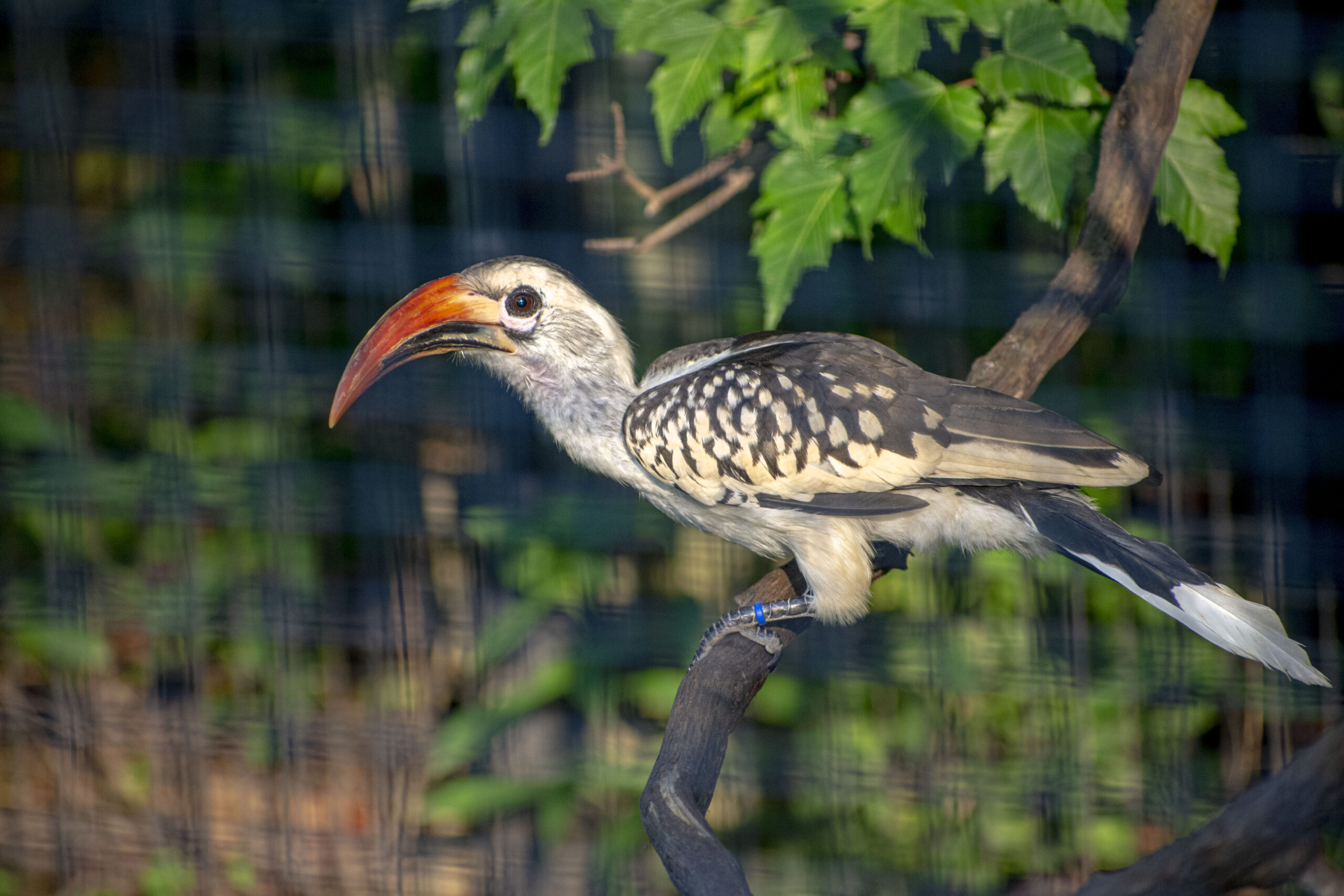I LIVE IN AFRICA
Red-billed hornbills live predominately on the ground in the savannas and woodlands of sub-Saharan Africa.
I AM AN OMNIVORE
Red-billed hornbills feed primarily on insects, but will also consume small lizards and fruit.
RED-BILLED HORNBILLS ARE SOCIAL
Hornbills can often be found in pairs or groups of a few individuals. During the dry season, large flocks, sometimes several hundreds of red-billed hornbills, will congregate at watering holes and other feeding areas.
BREAKFAST IN THE NEST
When caring for their young, the female seals herself into a tree cavity, leaving only a small slit through which the male provides food. The female then breaks out of the nest when the oldest chick is 21 to 22 days old. The chicks then reseal the entrance alone, using their droppings and food remains. Once they’re able to fly, the chicks will break the entrance and fly away without returning to the nest; however, they may remain with their parents for up to six months.
HELPING HORNBILLS IN THE WILD
The Fort Wayne Children’s Zoo provides financial support to the Hornbill Research Foundation, which is used to train locals to collect data on hornbills, in order to secure their populations for the future.
I AM IMPORTANT TO MY ECOSYSTEM
Because of the red-billed hornbill’s ability to commute over long distances, they play an important role in the dispersal of seeds and plant reproduction.

